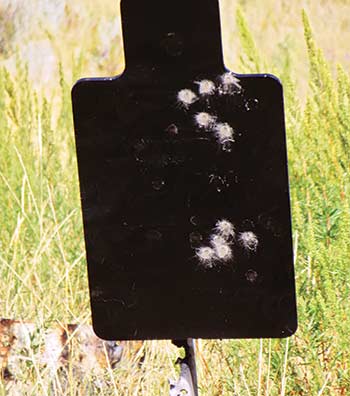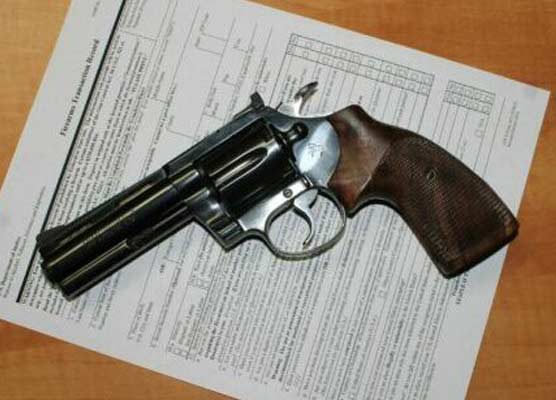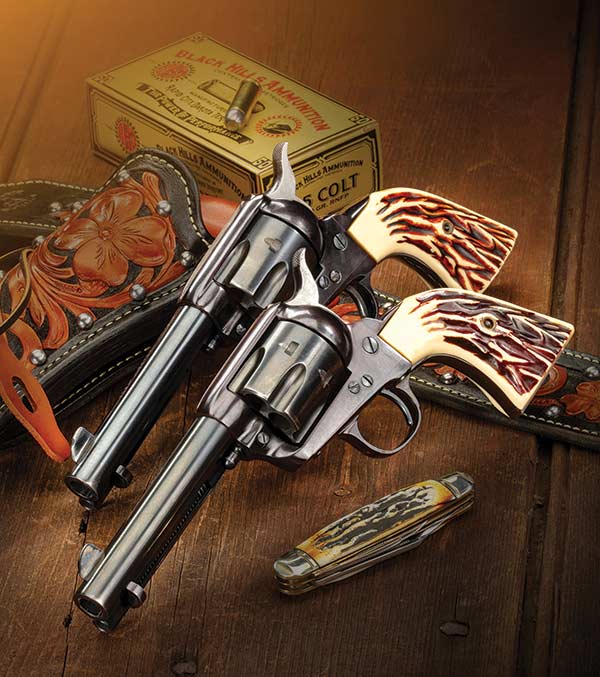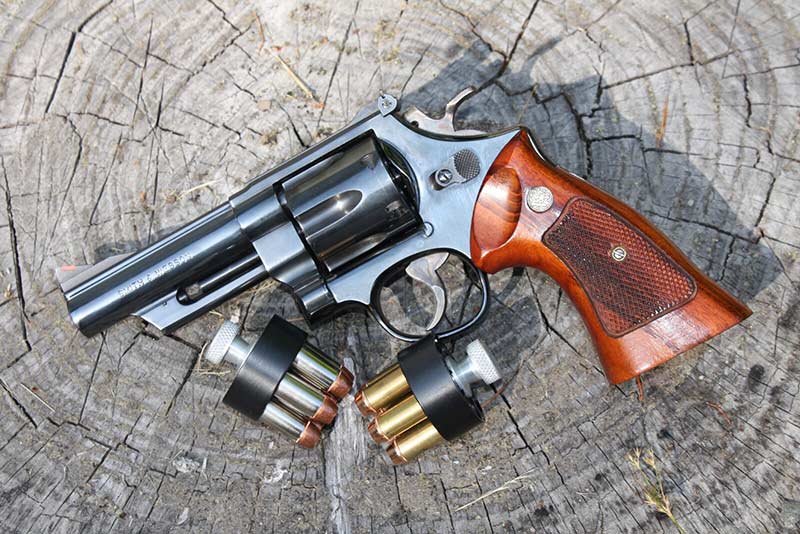This gun happens to also be one of the most inherently accurate revolvers I’ve ever mounted in a machine rest. Once I fired five 5-shot groups from each chamber and then five more groups loading five of the six chambers at random. The ammunition I used was Remington 148-grain .38 Special wadcutters. Range was 25 yards and the average of all the groups was only 1.25 inches.
The second M&P is much newer to me. I bought it early in 2016 at another Montana gun show. The price was considerably higher than the first one, but what attracted me to it was its least-common 2-inch barrel length. It still wears its original S&W Magna checkered walnut grips.f
Although made just a few years apart, there are some interesting differences in these two M&Ps. The 5-inch has an “S” prefix before its serial number 822XXX, indicating it was made soon after World War II. According to the Standard Catalog of Smith & Wesson by Jim Supica and Richard Nahas, the S prefix started in September 1945 at serial number 811XXX. In1948, at the end of the second million M&P run, the prefix was changed to C and the serial numbers started all over again. My 2-inch M&P has C before SN 108XXX. The catalog says that “C1” guns were made beginning in 1948 and C223XXX was made in 1952, so mine is somewhere between those two years. I’d like to think it was made in 1949—the year I was born.
Golden-Age Artifacts
Two Of Duke’s Old Smith M&P .38’s Serve As A
Wayback Machine To The Days When Crafting Revolvers
Was An Art As Well As A Science
Never let it be said I hesitate when buying good used guns. Finish wear (short of major pits) bothers me not a bit as long as mechanical function is still perfect. Two of my revolvers are prime examples of this. They are among the finest of my handguns. But at the same time they’re two of the rattiest looking.
They are Smith & Wesson Military & Police .38 Specials—the same revolvers gaining the Model 10 moniker circa 1957. Mine predate the name change, having been made in the late 1940’s. Postwar M&P’s had 2-, 4-, 5- and 6-inch barrel lengths. Mine wear 2- and 5- inch barrels. The blue finish on one has turned mostly a dull black interspersed with areas of brown patina. The other one has most of its original blue but mixed in with what’s left are some lighter areas of holster wear. Also something hard has impacted this second M&P along the way, leaving a couple of small divots on the barrel and topstrap.
According to various sources, the barrel lengths of my two are the rarest. The 5-inch I bought at a small Montana gun show in 1978 for the grand sum of $65. Somewhere along the way during the past 38 years the original grips have disappeared, but I’m sure they were on it in the beginning. Today it wears a nice set of Bear Hugs made for me by Deacon Deason shortly before his untimely passing.
Also in 1948, the M&P’s basic action was changed from a long hammer throw to a short hammer throw. The general consensus of serious revolver shooters of the era being the long version gave a smoother double-action trigger pull. Considering my two samples I believe this to be correct.
What is also correct is the general quality of Smith & Wesson revolvers from that era was superb. I have no reason to think either of my M&P’s has been worked over, so I think their fine, crisp single-action triggers are representative of the species. With a Lyman gauge my 5-inch M&P averages 3 pounds, 6 ounces. My 2-inch averages exactly one pound more.
Designed as a fighting handgun from its inception in 1899, sights on M&P’s are fixed. (There were some target sighted ones offered early on in the 20th century.) “Fixed” means a groove down the topstrap for a rear sight and, until 1952, a half-moon shaped front sight forged integrally with the barrel.
These sights are among the hardest to change for zeroing. About the only thing possible for less than an expert gunsmith is filing down the front to raise the point of impact. As the photos show, both of mine print slightly right at 10 yards. The 2-inch prints about 4 inches above point of aim while the 5-inch hits dead on for elevation.
The C-prefix M&P’s were the same ones given the Model 10 designation in 1957. By 1967 when the D prefix was applied, 3 million M&P/Model 10’s had been produced. The Model 10 is still in Smith & Wesson’s catalog, but only with a 4-inch barrel. Surely, the total made in 117 years is at least 5 million. I don’t know the current figures.
For a while during that great span of years, nearly every cop in America carried an M&P S&W revolver in his holster. I doubt if any are still there.







